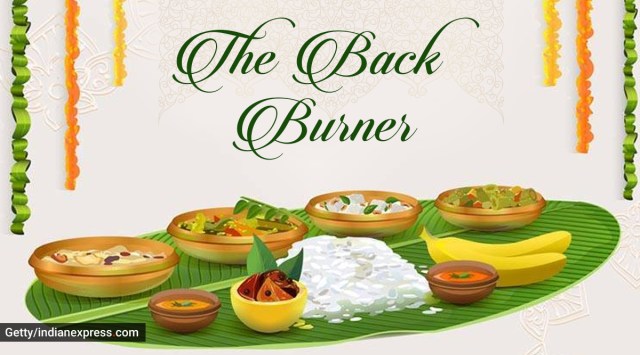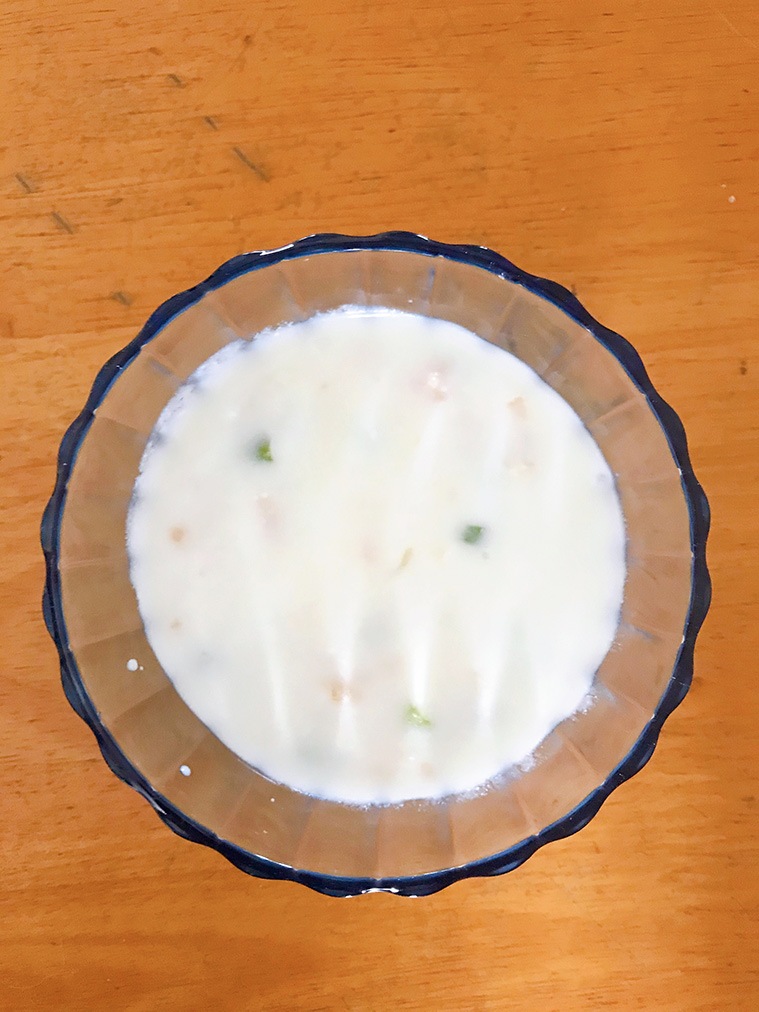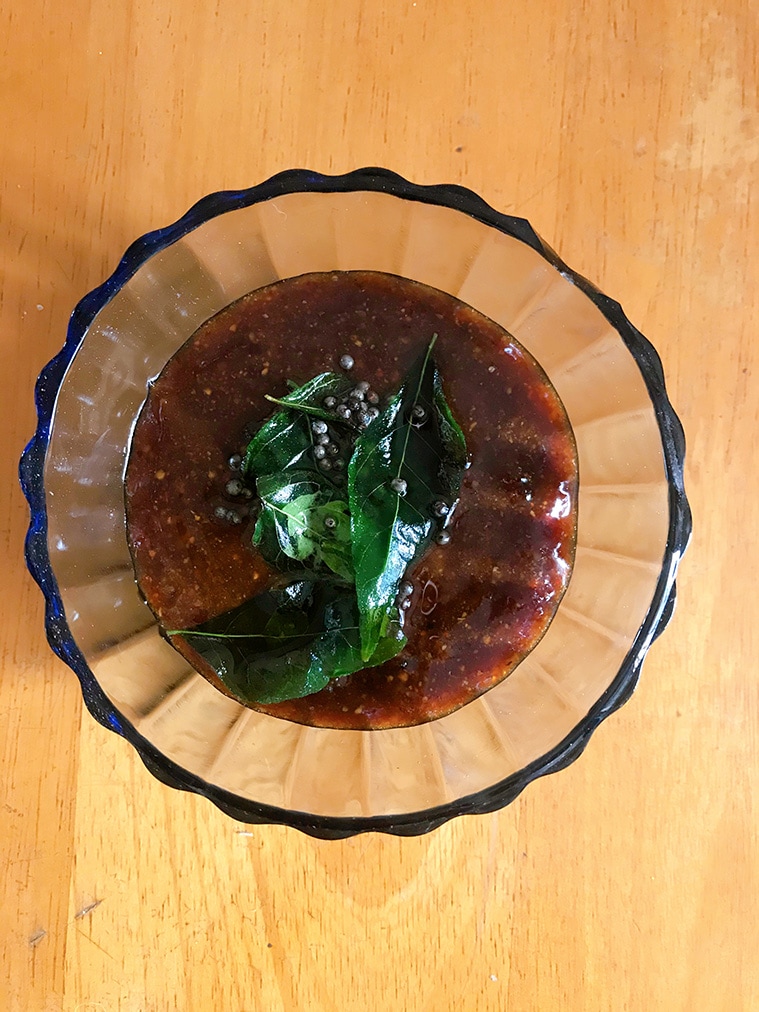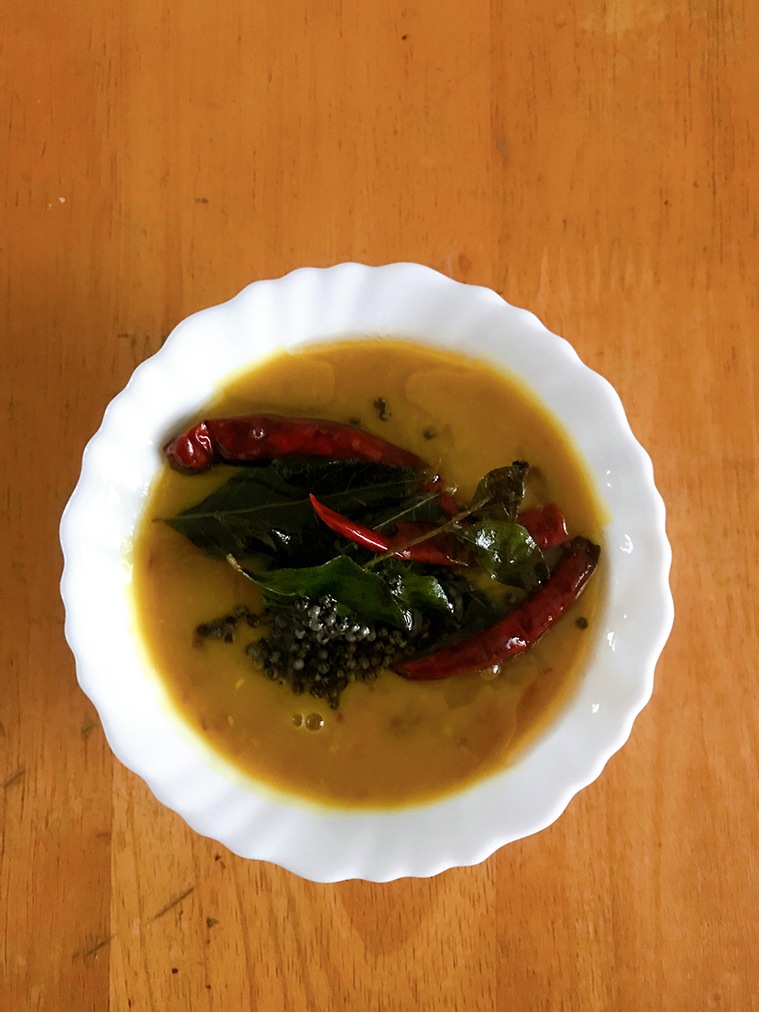📣 For more lifestyle news, click here to join our WhatsApp Channel and also follow us on Instagram
The Back Burner: Recipes for Onasadhya at home: Part 2
Inji thayir, puli inji and parippu are simple dishes that play very important roles in the onam feast
 Sadhya is a traditional Onam feast consisting of a variety of vegetarian dishes. (Photo: Getty Images/Thinkstock; design: Gargi Singh)
Sadhya is a traditional Onam feast consisting of a variety of vegetarian dishes. (Photo: Getty Images/Thinkstock; design: Gargi Singh)In the last post, I shared recipes for two of the key dishes — sambar and thoran — that form part of the traditional Malayali feast known as sadhya. Here are three more; they are fairly easy to make, but each has an important role to play in the meal.
Inji Thayir
This is perhaps the quickest and easiest dish on the sadhya menu, although, as my mother likes to remind me every single time we’ve discussed it, it is crucial to the feast. I can imagine why; one invariably eats beyond one’s actual physical capacity at a sadhya and inji thayir — which literally translates to ‘ginger curd’ — is a good digestive. Personally, though, I care more for its role as a palate cleanser in between the different sadhya courses (to aid digestion, I just lie down on my bed and groan).
 Inji thayir is important for its role as a digestive and palate cleanser. (Photo: Pooja Pillai)
Inji thayir is important for its role as a digestive and palate cleanser. (Photo: Pooja Pillai)
Ingredients
1 cup – Fresh curd
1 tsp – Fresh ginger, minced
½ tsp – Green chillies, minced
Salt, to taste
Method
Mix the ginger, green chillies and salt with the curd.
Serve a tiny amount – just enough to taste in between courses – with the sadhya
ALSO READ | The Back Burner: Make your own sadhya for Onam: Part 1
Puli Inji
This is really a chutney but — as I’m sure you can guess — it is, hands down, my absolute favourite part of the sadhya. Yes, I love avial and erissery and, particularly, the payasams and pradhamans, but sadhya without puli inji (literally, ‘tamarind ginger’) is unimaginable to me. Like inji thayir, you only serve a small amount of puli inji at the sadhya, but the oomph that it packs in that small portion is considerable.
 Sweet, sour and with a heat from ginger and green chillies, puli inji is the oomphiest component of the sadhya. (Photo: Pooja Pillai)
Sweet, sour and with a heat from ginger and green chillies, puli inji is the oomphiest component of the sadhya. (Photo: Pooja Pillai)
Ingredients
2 tsp – Ginger, minced
2 tsp – Green chillies
1 cup – Thick tamarind water
1 tbsp – Jaggery, grated
2 tsp – Coconut oil (or any neutral oil)
1 tsp – Urad dal
1 tsp – Chana dal
1 tsp – Fenugreek seeds
2-3 – Dried red chillies
Asafoetida – a pinch
½ tsp – Mustard seeds
4-5 – Curry leaves
Salt, to taste
Method
Dry roast the urad and chana dals and dried red chillies on low flame until they turn fragrant. Add the fenugreek seeds until they start to turn brown, which will happen very quickly, then quickly put in the asafoetida and turn off the flame. As it cooks in the residual heat, the asafoetida will release its aroma. Allow to cool completely and then grind to a powder.
In 1 tsp oil, fry the ginger and green chillies and before they start to turn brown, add the tamarind juice.
On a medium flame, allow the mixture to thicken slightly, then add the salt and jaggery and continue to cook. You can add less or more jaggery depending on how sour the tamarind juice is; the idea is to balance its tang with some sweetness.
Once all the jaggery has dissolved, add the masala powder you’ve made, and continue to cook until the puli inji is jammy in consistency.
Temper with curry leaves and mustard seeds popped in the remaining oil.
You can make this the night before and store it in the fridge; it only gets better the next day.
ALSO READ | Onam special: Make special inji curry with this easy recipe
Parippu
Parippu, served with rice and a bit of ghee, forms the first course of the sadhya. It’s a plain dish, meant to prepare your palate for all the complex flavours that will follow. Again, despite its simplicity, it’s an essential component of the sadhya. Parippu literally means ‘lentil’, and while some people make this with tuvar or arhar dal, it’s mostly made with yellow moong dal. There is a richer variation involving the use of a coconut paste, but my mother makes the pared-down kind, the recipe for which is here.
 Parippu is a simple but pleasing first course which prepares your palate for the complex flavours that will follow. (Photo: Pooja Pillai)
Parippu is a simple but pleasing first course which prepares your palate for the complex flavours that will follow. (Photo: Pooja Pillai)
Ingredients
1 cup – Yellow moong dal
½ tsp – Turmeric powder
Salt, to taste
1 tsp – Coconut oil (or any neutral oil)
½ tsp – Mustard seeds
5-6 – Curry leaves
2-3 – Dried red chillies
ALSO READ | The Back Burner: Hot, spicy garlic rasam for cold rainy days
Method
Wash and dry the moong dal on a clean cloth, then dry roast it until it’s fragrant and golden.
Pressure cook the roasted dal with 2 – 2 ½ cups of water, turmeric and salt, until it is mushy and thick. If required, mash the cooked dal.
Temper with mustard seeds, curry leaves and dried red chillies fried in coconut oil.
Serve with hot rice and a generous dollop of ghee; if you crush a pappadum on top of this and eat, you may not want to move on to the other dishes.
[The Back Burner is a weekly blog that will talk about all things food (with recipes, of course)]
📣 For more lifestyle news, click here to join our WhatsApp Channel and also follow us on Instagram



- 01
- 02
- 03
- 04
- 05
























